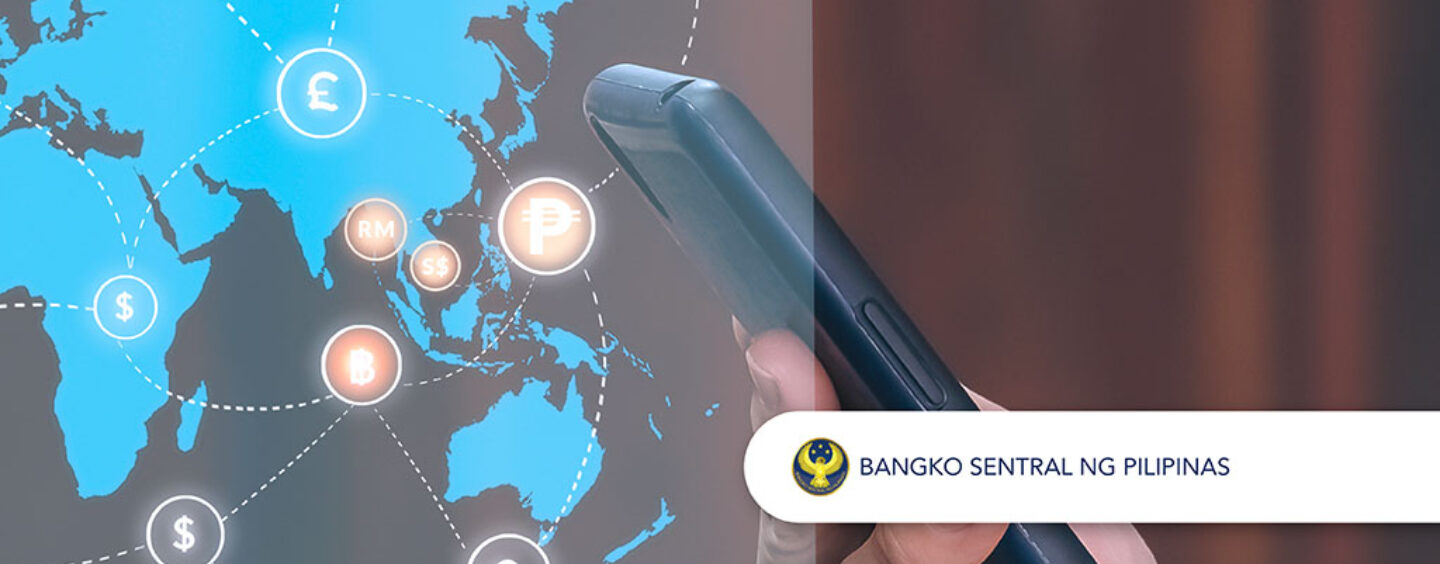
BSP to Finalise Cross-Border Payments Blueprint, CBDC Report This Year
by Fintech News Philippines January 29, 2024The Bangko Sentral ng Pilipinas (BSP) is currently finalising a blueprint for instant cross-border payments, which promises to be a competitively priced option in the multinational remittance market.
BSP Deputy Governor Mamerto E. Tangonan announced that the BSP is working on the cross-border payments blueprint, and that this scheme will be completed by this year.
The central bank aims to implement cross-border payment connectivity within the next two years, keeping pace with its peers in the Association of Southeast Asian Nations (ASEAN).
In March of last year, the BSP, along with four other central banks in the region, declared their intention to link their domestic instant payment systems through the Bank for International Settlements’ (BIS) Project Nexus.
BSP cross-border payments blueprint to link with Project Nexus
Project Nexus, developed by the BIS Innovation Hub Singapore Centre, connects various payment system operators, including the Eurosystem’s TARGET Instant Payment Settlement (TIPS), Malaysia’s Real-time Retail Payments Platform (RPP), and Singapore’s Fast and Secure Transfers (FAST).
In November 2022, the BSP signed a memorandum of understanding (MoU) with other ASEAN central banks to enhance collaboration on regional payment connectivity (RPC).
RPC is expected to significantly aid economic recovery and promote growth by enabling swift, seamless, and more economical cross-border payments throughout the region. It includes various modalities such as quick response (QR) code and real-time payments.

Mamerto E. Tangonan
Deputy Governor Tangonan highlighted that Filipinos with domestic e-wallet or bank accounts will be able to transfer money in local currency to counterparts in Malaysia, Singapore, Thailand, and Indonesia. He said,
“We have a large Filipino community based in Singapore. We anticipate that this will bring a lot of benefits for them because we’re working to make this one of the least expensive cross-border remittance service in the market.”
Initially, cross-border fund transfers may begin with person-to-person (P2P) transactions before expanding to merchant payments. Deputy Governor Tangonan noted that Singapore, Thailand, Indonesia, Malaysia, and Vietnam are consistently among the Philippines’ top trading partners. He mentioned that this service would also benefit large Filipino communities in the Middle East, North America, and Europe.
He elaborated that for merchant payments, Filipinos travelling in the ASEAN region could use local QR codes for payments without needing to convert pesos into other currencies. Conversely, tourists visiting the Philippines will also be able to use the BSP’s QR Ph for transactions. Deputy Governor Tangonan added,
“We’re going to start regional, but the outlook is global. This is a solid stepping stone for us to be able to reach and offer this network service to other regional payments networks.”
Project Agila, BSP’s wCBDC pilot programme
Furthermore, Deputy Governor Tangonan revealed that the BSP would soon publish a report on Project Agila, the central bank’s wholesale Central Bank Digital Currency (CBDC) pilot project.
This project is expected to enhance the safety and efficiency of large-value payments. Hyperledger Fabric has been designated as the distributed ledger technology for this project, with six financial institutions participating in the pilot.

Mamerto E. Tangonan, Deputy Governor and head of the Payments and Currency Management Sector (PCMS) of the BSP, presenting why the central bank is studying CBDCs at the INDX3.0 Summit
The BSP is also collaborating with the Bureau of Treasury to increase public access to government securities, corporate bonds, and similar securities. Deputy Governor Tangonan stated,
“(CBDCs) will broaden access to government securities, which is good for the government, the issuer, and also good for the public because they can earn more from their savings.”
He emphasised that CBDCs could provide broader access to government securities, benefiting the government, issuers, and the public.
Since 2021, the BSP has been exploring use cases for wholesale CBDCs, assessing potential risks and the use of CBDC payments among financial institutions. The central bank sees CBDCs as a tool for additional monetary policy action, fostering competition and innovation in the financial industry, and enhancing financial inclusion.
Featured image credit: Edited from Freepik








